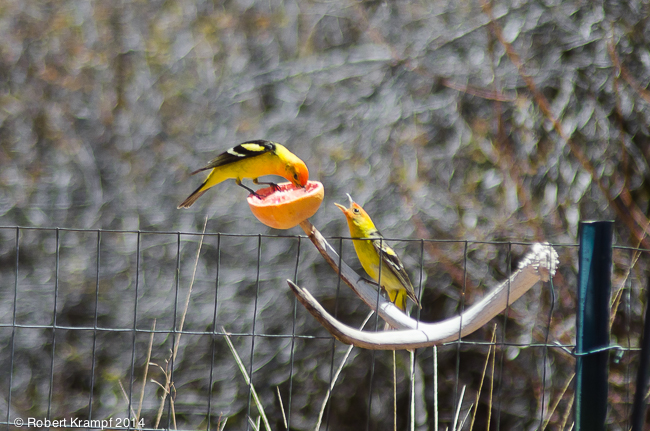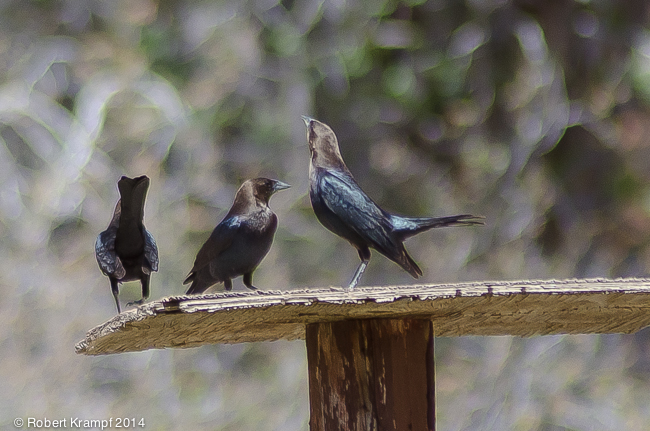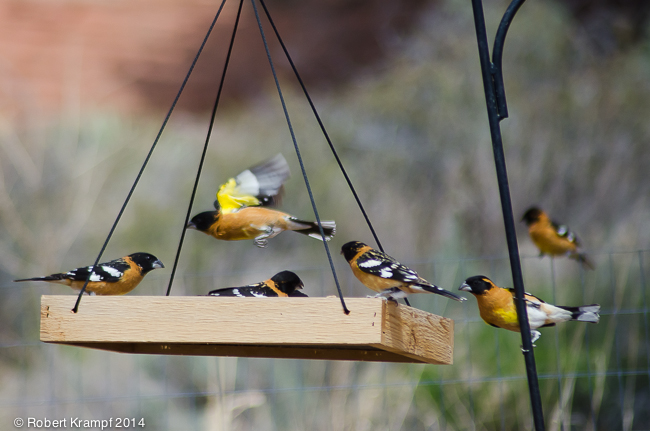
Over the past couple of weeks, a huge number of new birds have been showing up in our yard. These are the migratory birds that spend the summer here, and avoid our cold winter nights by heading south when things here get chilly. Nancy has been watching her garden journal, and most of the birds have shown up on the same day that they appeared last year. The Western Tanagers were the latest arrivals, and they are one of our favorite birds. Their mix of bright colors makes them very easy to identify.

Our first Spring arrivals were the Black-chinned Hummingbirds. The first one showed up on the day of our last snow, and we now have a few dozen of his friends. Although they are called Black-chinned Hummingbirds, their throats flash a bright purple.

We put out oranges to attract many birds that are not seed eaters. The oranges also attract Rock Squirrels and Chipmunks, so we try to put them in places where only the birds can get to them. We started putting out fruit for the Bullock's Orioles, but found that quite a few other birds like oranges too.

Our feeders attract seed-eaters, like these Brown-headed Cowbirds. They are pretty birds, but they parasitize the nests of other birds. They lay their eggs in another bird's nest, and let the other bird raise their young.

The seeds also attract Black-headed Grosbeaks, I counted fifteen of them on the day they first showed up. They have also been eating the thistle seeds from our finch seed socks, oranges, and I have even seen them trying to drink the nectar from our hummingbird feeders.

With all of the reds, yellows, and oranges of the other birds, these bright blue Lazuli Buntings really stand out. A few Lazulis mixed in with the Tangers and Grosbeaks is quite a sight.
